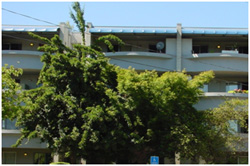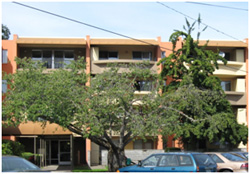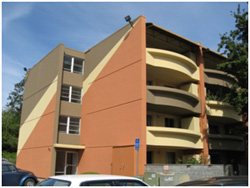 |
Home | Contact Us | A to Z |
 |
Northwest NotesOffice of Public Housing Region X - Alaska, Idaho, Oregon, Washington The Director's CornerThere are a number of upcoming opportunities for which your PHA may qualify that are in the HUD FY 2010 Notice of Funding Availability (NOFA); Policy Requirements and General Section to FY2010 NOFAs for Discretionary Programs. The General Section lists the programs expected to be included in HUD's FY 2010 NOFAs. As of early October 2010, the following programs are anticipated:
All of this information is provided to assist prospective applicants in planning successful applications and is available on the HUD Web site and on the Grants.gov Web site (http://www.grants.gov/search/). Be prepared for these and other opportunities for which your PHA may qualify. On behalf of Office of Public Housing team members in the Seattle, Portland & Anchorage offices, we hope this newsletter is helpful to you. Let me know if there are items you would like to see in future newsletters. Harlan Stewart Senior Housing Opens in McMinnville, ORIn recent years, McMinnville city officials, the McMinnville Downtown Association, and the Housing Authority of Yamhill County (HAYC) have stressed the importance of developing affordable senior housing in McMinnville. None existed in downtown McMinnville, even though the historic old-town area on Third Street is a favorite place for seniors to socialize and shop. If designed correctly, placing senior housing in the historic downtown area, especially in a currently unattractive and inefficient location, would meet two critical needs and encourage further development. HAYC began researching and discussing a mixed-use project in the historic downtown area with city officials and the Downtown Association. It was clear that such a development would need to complement the characteristics and atmosphere created by existing buildings and street amenities in the downtown core, especially on Third Street. Such features included commercial/retail space at street level, red brick façade, awnings, entrance doors inset from the sidewalk in front of the building, old-town street lights, and other features that moved away from the contemporary look and closer to the early 1900's architecture that characterized most of the structures along Third Street. It was also decided early on that the project would maximize environmentally friendly and sustainable features wherever possible and set the standard for future development in the area. The open courtyard and attractive community room separating the taller wings on each side provide both indoor and outdoor amenities for residents. The courtyard includes numerous planting areas. Some are pre-planted with environmentally friendly characteristics, such as minimal watering, and some areas are dedicated for use by the residents who wish to be active in gardening and landscaping. The courtyard is open toward the downtown area, providing attractive views and a connection with downtown. The community room has comfortable seating in the main area with a library oon one side and a small kitchen on the other. Two computer stations offer free Internet access for the residents. The funding of this project required several sources of financing, including Low Income Housing Tax Credits through Oregon Housing and Community Services (OHCS), PNC Capital as the tax credit syndicator/limited partner, West Coast Bank as construction and permanent lender, and other funding available through OHCS including HOME funds, weatherization funds and the OHCS Trust Fund. The application for OHCS funding was successful and represented, by far, the largest project funded through OHCS in the 2006 funding cycle. SUSTAINABILITY/USE OF MATERIALS
The key "Green" features of the Village Quarter are: An advanced storm water management system which captures rainwater and uses it to feed plantings and flush toilets; a "green" roof on the Community Room; covered parking which reduces heat island effects and footprint; energy efficient HVAC and light fixtures; re-used and re-cycled building materials; building materials with low levels of volatile organic compounds; balconies and overhangs that maximize sunlight and shade. These features set the example for future developments in this region. The Oregon Secretary of State lauded Village Quarter for its innovative "green" design and expects this project to drive design efforts throughout Oregon. HUD at "Government Going Green" Event
On August 26th the Government Going Green fair occurred at the plaza of the Jackson Federal Building in Seattle, WA. The GSA Northwest Regional Administrator George Northcroft kicked off the event by giving a speech about how the Government Going Green (GGG) will encourage the private sector to take similar actions and educate the public on different agencies. It will also provide transparency on ARRA projects. This demonstration was not only an opportunity for the public to get ideas of how they can take part in making a difference in the environment, but also an opportunity to bring organizations together. The event was hosted by the Seattle Federal Executive Board, which had a total of twelve agencies showcasing their part in going green. The twelve agencies were NOAA, HUD, GSA, EPA, FAA, King County, City of Seattle, Port of Seattle, SSA, FGC, Army, and Army Corps of Engineers. All of the federal agency attendees had the chance to view one another's way of helping the environment go green. The federal agencies created booths to showcase at the event detailing how the different departments are going green in their projects. HUD showcased information about Public and Indian Housing Sustainability and the Seattle field office's HOPE VI Grants. One of the featured projects was Seattle's High Point community, a renowned project that has received numerous awards from around the world for green building and design.
HUD provided funds to improve building materials that make homes more energy efficient. For example, new windows make homes air tight so that the utility costs of bills are more affordable. HUD and the Department of Energy have a partnership to better improve the quality of homes and buildings. The partnership helps create livable, walk-able and environmentally sustainable communities. With the partnership comes collaboration with other agencies to help create a more "green" environment. The GGG fair continued with a little light rain but could not curb the enthusiasm of the presenters on 2nd Ave. There was also live music by a band that attracted more and more people throughout the day. Bert the Salmon, the King County Environmental Mascot, entertained the crowd while reminding participants to always be reminded of the importance healthy waterways for salmon. Recovery Act in Action: La Creole ManorSituated in Dallas, OR, this prominent sixty-unit, four story apartment complex was constructed and purchased in 1970 and primarily serves seniors and the disabled. There are 35 studio units and 24 one-bedroom units featuring private patios or balconies. Rehab of the interior hallways was completed about 8 years ago. With a combination of regular Capital Funds and ARRA Funds, the project received an exterior paint job, new split system heat pumps and replacement of all the water distribution lines through the building. The updates have created an attractive and very desirable place to live for elderly and disabled residents in the West Valley Housing Authority's jurisdiction.
IMS-PIC CornerWhat is IMS? PIC is evolving into the PIH Inventory Management System or IMS. During this transition, PIC will be referred to as IMS-PIC. Last quarter's Newsletter discussed Notice PIH 2010-6 and changes to unit status in PIC. The Job Aid is essential for understanding the steps required for making changes to the status of vacant Public Housing units. If submitting a change that requires HUD approval, the changes must also be submitted to HUD. This is not in the list on page 5, but is explained on page 6. The user can request changes for any number of units or developments, with steps 1 through 10. Once they are submitted, all of the building and unit data is locked until HUD approves the proposed status changes. This is the same lock that happens when you submit building and unit data to HUD. Remember that some of these changes may require other documentation. Those submitting changes are recommended to notify the PHRS and PIC Coach in order to approve the requests promptly. Notice PIH 2010-25, Timely Reporting Requirements of HUD 50058 was issued July 7, 2010. It establishes new requirements for timely submission of HUD 50058s. Reports must now be submitted within 60 days of the effective date of the action. This notice also discusses the requirement to use action code 10 whenever a voucher is issued. Initially, a warning shows for any new admissions not preceded by an action 10. For questions about the new release, or any other PIC questions, please contact the HUD field office PIC Coach. Seattle Office - Suzanne Manville at (206) 220-6231 HUD makes $110 Million Available for Lead Hazard CleanupIn a NOFA issued August 11, 2010, HUD announced that it is making approximately $110 million in grants available to help eliminate dangerous lead-based paint from low income homes and to protect young children from lead poisoning. The grants to States and local governments are being offered through HUD's Lead-Based Paint Hazard Control and Lead Hazard Reduction Demonstration Programs. "These grants are critical for States, counties, and cities who are on the front lines of protecting our children from dangerous lead hazards," said Jon Gant, Director of the Office of Healthy Homes and Lead Hazard Control. "While we have made remarkable progress toward eliminating lead poisoning in children nationwide, now is the time to focus on reaching the finish line. We look forward to communities applying for these grants so that they can help make older housing safer and healthier for children." HUD is providing an opportunity for applicants through its Lead-Based Paint Hazard Control Grant Program. Prospective grantees will be able to apply for supplementary funding to promote and develop a local Healthy Housing initiative, building on their lead hazard control program, to address multiple housing-related health hazards in accordance with best practices HUD has identified. In addition, the Department will announce the availability of funds for four Healthy Homes and lead grant programs in the near future. To apply, prospective grantees must submit their applications electronically via www.grants.gov. Applicants are urged to sign up for the Grants.gov notification service to receive periodic updates or changes to this grant offering. The deadline to apply is October 15, 2010. Common VMS Reporting Errors
|
|||||||||||||||||||||||||||||||||||||||||||||||||||||||||||||||||||||||||||||||||||||||||||||||||||||||||||||||||||||||||||||||||||||||||||||||||||||||||||||||||
| Document | Date Issued | Title |
| FR-5415-C-11 | 20100924 | Notice of Funding Availability for HUD's Fiscal Year (FY) 2010 Lead-Based Paint Hazard Control Grant Program and Lead Hazard Reduction Demonstration Grant Program; Technical Correction (http://edocket.access.gpo.gov/2010/pdf/2010-23864.pdf) |
| FR-5415-N-11 | 20100909 | Notice of Availability: Notice of Funding Availability for HUD's Fiscal Year (FY) 2010 Lead-Based Paint Hazard Control Grant Program and Lead Hazard Reduction Demonstration Grant Program (http://edocket.access.gpo.gov/2010/pdf/2010-22537.pdf) |
| FR-5415-N-07 | 20100831 | Notice of Availability: Notice of Funding Availability (NOFA) for HUD's Fiscal Year (FY) 2010 HOPE VI Revitalization Grants Program (http://edocket.access.gpo.gov/2010/pdf/2010-21734.pdf) |
| FR-5415-N-25 | 20100831 | Notice of Availability: Notice of Funding Availability (NOFA) for HUD's Fiscal Year (FY) 2010 Choice Neighborhoods Initiative -- Round 1 NOFA (http://edocket.access.gpo.gov/2010/pdf/2010-21733.pdf) |
| FR-5430-N-01 | 20100804 | Proposed Fair Market Rents for the Housing Choice Voucher Program and Moderate Rehabilitation Single Room Occupancy Program Fiscal Year 2011 (http://edocket.access.gpo.gov/2010/pdf/2010-19084.pdf) |
| FR-5374-N-12 | 20100802 | Buy American Exceptions Under the American Recovery and Reinvestment Act of 2009 (http://edocket.access.gpo.gov/2010/pdf/2010-18911.pdf) |
| FR-5428-N-01 | 20100723 | Public Housing Assessment System (PHAS): Asset Management Transition Year 2 Extension (http://edocket.access.gpo.gov/2010/pdf/2010-18126.pdf) |
| FR-5417-N-01 | 20100709 | Administrative Guidelines; Subsidy Layering Reviews for Proposed Section 8 Project-Based Voucher Housing Assistance Payments Contracts (http://edocket.access.gpo.gov/2010/pdf/2010-16827.pdf) |
E-Memos (electronic memoranda)
Seattle HUB
| Issued | Purpose |
| 10-01-2010 | Changes in Staff & Assignments - Seattle Public Housing Hub |
| 09-29-2010 | Region X HUD Environmental Update - September 2010 |
| 09-22-2010 | Grants.gov Security Build Changes to Occur October 11, 2010 |
| 09-21-2010 | FFATA Sub-recipient Reporting/Grantee Webinar - September 23rd |
| 09-20-2010 | HUD-VASH Webcast - September 23rd |
| 09-15-2010 | Family Self-Sufficiency (FSS) Coordinator Meeting/Workshop |
| 09-08-2010 | Changes In Staff & Assignments - Seattle Public Housing Hub |
| 09-07-2010 | Lead-Based Paint Enforcement and Mitigation Trainings in Seattle and Portland |
| 09-02-2010 | Technical Difficulties with Choice Neighborhoods Webcast |
| 08-16-2010 | Bed Bugs EPA Consumer Alert! CDC/EPA Joint Statement |
| 07-22-2010 | PIH EIV Pending Verification Message |
| 07-21-2010 | Required New Federal Labor Law Poster for ARRA Whistleblowers |
Portland FO
| Issued | Purpose |
| 09-29-2010 | Region X HUD Environmental Update - September 2010 |
| 09-24-2010 | NEW LINK to NOFA above supplement to Sept 23 emo/NOFA |
| 09-23-2010 | NOFA Health Center New Access Points Funded Under the FY10 Affordable Care Act |
| 09-21-2010 | Security Build, Grants.gov |
| 09-20-2010 | HUD / Veterans Affairs Supportive Housing Program (VASH) |
| 09-20-2010 | Federal Funding Accountability and Transparency Act (FFATA) - Town Hall Meeting |
| 09-15-2010 | FSS Coordinator Counterpart Meeting |
| 09-02-2010 | Lead Ed: HUD's Lead Safety and Mitigation |
| 09-02-2010 | Technical Difficulties with Choice Neighborhoods Webcast |
| 08-16-2010 | Bedbugs: EPA and CDC Joint Statement |
| 08-03-2010 | Third Quarter Newsletter Issued |
| 07-22-2010 | PIH EIV Pending Verification |
PIH Notices
| Notice | Issued | Title |
| 10-40 | 09/28/2010 | Set-Aside Funding Availability for Project-Basing HUD-Veterans Affairs Supportive Housing Vouchers |
| 10-38 | 09/22/2010 | Income exclusion under temporary employment by U.S. Census Bureau |
| 10-37 | 09/07/2010 | Operating Fund Program: Guidance on Demonstration of Successful Conversion to Asset Management to Discontinue the Reduction of Operating Subsidy, Year 5 Applications |
| 10-30 | 08/02/2010 | Transactions between Public Housing Agencies and their Related Affiliates and Instrumentalities |
| 10-29 | 07/30/2010 | Request for Applications under the Moving to Work Demonstration Program -- Attachment - MTW Optional Eligibility Worksheet |
| 10-28 | 07/30/2010 | Extension of Notice PIH 2009-23 (HA) - Requirement for Designation of Public Housing Projects |
| 10-27 | 07/27/2010 | Reinstatement of PIH Notice 2009-05, Accessibility Requirements for Native American Programs: Section 504 of the Rehabilitation Act of 1973; Americans with Disabilities Act of 1990; Architectural Barriers Act of 1968; and Fair Housing Amendments Act of 1988 |
| 10-26 | 07/26/2010 | Non-Discrimination and Accessibility for Persons with Disabilities |
| 10-25 | 07/07/2010 | Timely Reporting Requirements of the Family Report (form HUD-50058 and form HUD- 50058 MTW) into the Public and Indian Housing Information Center |
Important Dates
Please Note: All dates subject to change. Refer to program websites for complete list of forms due!!!
| FYE 3-31 PHAs | |
| 12-31-2010 | Audited FASS for FYE 3-31-2010 submission due to REAC, audit due to FO |
| 01-16-2011 | PHA Plan Submission (CFP Performance and Evaluation Reports must be included in Plan) |
FYE 6-30 PHAs |
|
| 08-31-2010 | Unaudited FASS for FYE 6-30-2010 due to REAC |
| 08-31-2010 | MASS Certification due to REAC |
FYE 9-30 PHAs |
|
| 11-29-2010 | SEMAP submission due |
| 11-30-2010 | Unaudited FASS for FYE 09/30/2010 due to REAC |
| 11-30-2010 | MASS Certification due to REAC |
FYE 12-31 PHAs |
|
| 09-30-2010 | IPA Audit due to Field Office |
| 10-08-2010 | Audited FASS for FYE 12-31-2009 due to REAC |
| 10-18-2010 | PHA Plan Submission (CFP Performance and Evaluation Reports must be included in Plan) |
All PHAs |
|
| Monthly | CFP obligated-expended data is submitted through eLOCCS. CFP work completion activities where pre-audit is required, are reminded to submit Final P&E Reports with AMCC to Field Office. |
| Monthly | Send complete copy of renewal Mod Rehab program HAP contracts with owners to FMC representative. Please include Attachment A. Contracts needed to request renewal funds and to release payments. |
| Monthly | VMS data collection (HUD 52681B submitted electronically). Ensure data is submitted timely and accurately. Failure to report timely could result in loss of Administrative Fees. Check VMS website for exact submission dates www.hud.gov/offices/pih/centers/fmc/index.cfm |
| Reminder | Please continue to submit Year-End Settlement Statements (HUD-52681) for Section 8 Mod Rehab, SROs, and Mainstream (DV) vouchers ONLY. Submit to FMC (45 calendar days after FYE). Ninety days prior to FYB, submit complete budget (HUD-52673, 52672, 52663) for Mod Rehab, SRO, HOPE VI, Mainstream (DV code-5 year increments), to FMC representative. |
ARRA |
|
| 03-17-2011 | PHAs must expend at least 60% of the Formula Grant |
| 09-2011 | PHAs must expend at least 60% of Competitive Grants |
####
![[Photo 1: Exterior of the Village Quarter in downtown McMinnville, OR]](/local/shared/r10/images/23652_pihfy10q4a.jpg)
![[Photo 2: HUD summer interns, Selemun Welderfael, Areli Chiru-Rodriguez and Mackenzie Martin at HUD booth.]](/local/shared/r10/images/23652_pihfy10q4b.jpg)
![[Photo 3: Ryan Mielcarek, Facilities Management Specialist for Public Housing HUD hugging Bert the Salmon, King County Environment Mascot.]](/local/shared/r10/images/23652_pihfy10q4c.jpg)





